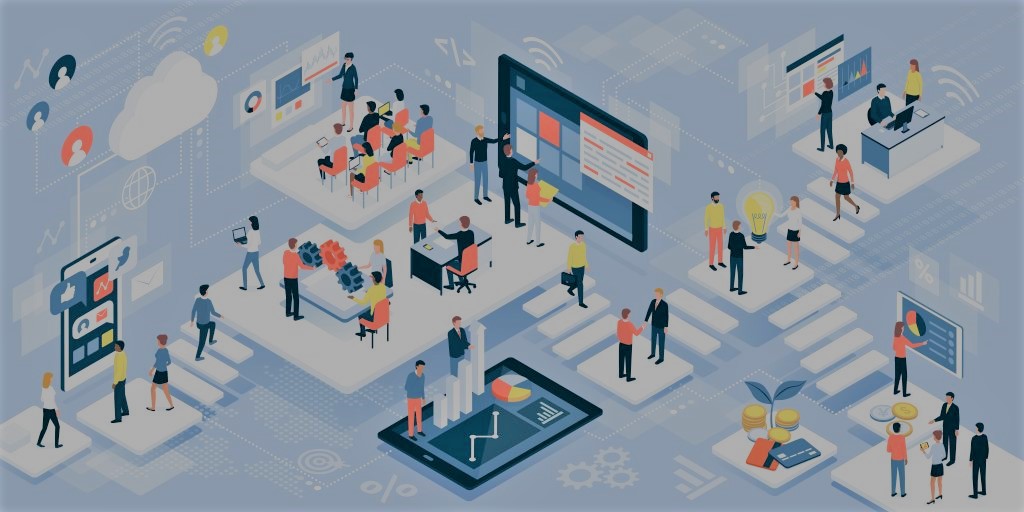By Paul Wilkinson | Owner/Director, GamingWorks
Parts Unlimited Shares Take Another Tumble
‘Once again, the CEO of Parts Unlimited is embarrassed by a tumbling share price as the unions threaten walk-out because of payroll issues caused by failures in the IT systems, and at the same time a credit card leak weakens investor confidence. The issues are put down to human error and IT skills shortages. Once again the company has also failed to make good on its promises to deploy the long-awaited Phoenix Project…’
These were the headlines confronting the team participating in a walk-through of The Phoenix Project DevOps Business Simulation as they failed to effectively collaborate and apply DevOps principles.
The simulation walk-through, held 16 May at IIL headquarters in New York City, was part of a meetup organized by IIL and the DevOps Agile Skills Association (DASA). The meetup was to explore the types of skills required for an IT organization in this age of fast-paced, digital disruption.
The author, Paul Wilkinson, and the DASA DevOps Competence Model
What is The Phoenix Project?
The Phoenix Project simulation is a dynamic, interactive and classroom-based workshop in which a team of delegates play roles in the ‘Parts Unlimited’ organization.The one-day simulation is a form of experiential learning, or ‘learning-by-doing’, and can be used for a variety of learning objectives such as translating DevOps theory into practice, developing effective communication & collaboration skills, and developing continual learning and improvement skills.
Captured Challenges
During the simulation walk-through we captured challenges the team experienced that they also recognize in their daily work:
| Unclear flow of work; work was ping-ponging back and forth. |
| Unclear insight into the work being done and the business initiatives and goals. |
| Tester involved too late, lack of insight. |
| Poor decision making on prioritization. |
| Priority information not passed downstream. |
| Filling up workloads with scarce resources, not cross-training to remove skills constraints. |
| Lack of security insights into work impacting financial data. |
| Poor business insight into progress. |
| Lack of insight into impact of issues and technical debt. |
| Too many assumptions about what was important and what to prioritize |
| Lack of business understanding and business engagement. |
| Flow of work kept stopping and going back upstream because of lack of information. |
| Defects being passed downstream and not being made visible. |
These challenges were captured on the team’s visual improvement backlog, revealing the underlying causes for the dramatic news headlines reported above (luckily it was only a simulation, but delegates recognized the stress, frustration and waste that occurs).
We then explored the ‘Three Ways of DevOps’ and collaborated as an end-to-end team to develop a visual management system to help provide a solution to many of these challenges.
The meetup in action!
Captured Takeaways
At the end of this short, interactive learning session the team was asked, ‘What did you discover in this simulation exercise that you need to take away and apply?’
| Prioritize skill development and cross training to deal with constraints (e.g. constraints caused by one person’s specialized skill, which limits the amount of work flowing through the system). |
| Communicate, Communicate, Communicate! – Foster and practice active listening, confirm understanding, confirm agreements and decision making, blame-free feedback. |
| Coaching for communication and collaboration skills, as well as DevOps skills (e.g. stand-ups, retrospectives, Kanban, value stream mapping). |
| Start fostering more collaboration between end-to-end stakeholders including business. |
| Agree on ‘collaboration behaviors’ – what behaviors will we see? And coach and give feedback on these behaviors. Practice! Practice until these behaviors become a habit ‘the way we do things here’. |
| T-shaped skills as a building block to increase flow and remove constraints. |
| Visibility. Don’t just visualize work, but also visualize improvements. |
| Team validation of agreed ways of behaving and working, team build visualization together to support their own work and support decision making. |
| Visibility to support trade off ‘features’ vs ‘defects’, ‘debt’, ‘risks’, ‘improvements’ |
| Reserve WIP for learning and improving (to develop T shaped skills, to remove constraints, to remove waste, to increase flow). |
| Accept that failure will happen. Experiment. Learn fast & improve. |
| Ask ‘How does this affect you?’, ‘What information do you need to be able to do your work and make decisions?’ |
| Traceability. Work in progress, work done, work not done. Traceability of planned vs unplanned work and visibility; where does unplanned work come from? Defects passed downstream? What is impact of unplanned work? |
| Creating buy-in to responsibilities, new ways of working, end-to-end collaboration. This type of session creates that buy-in and captured ‘shared’ takeaway actions. |
| Shift mentality. ‘DevOps’ is NOT the goal. It is the value and outcomes that are expected. |
In Conclusion
The delegates discovered not only the benefits of adopting DevOps principles, but also recognized and experimented with some of the core skills and competencies, as defined in the DASA Competence Model, that are critical for DevOps success.
The delegates also discovered how this type of experiential learning can help translate theory into practice, create end-to-end buy-in, and capture improvements to take away.
Interested in The Phoenix Project DevOps Simulation for your team?
Contact IIL
About the Author
Paul Wilkinson is the co-founder of GamingWorks, a simulation training company based in the Netherlands and a DASA Training Partner. He has been involved in the IT industry for more than 25 years and has a broad background in IT operations, IT management and product innovation and development. He was an ITIL V2 author and member of the ITIL V3 advisory group. He has facilitated 400+ simulations!


